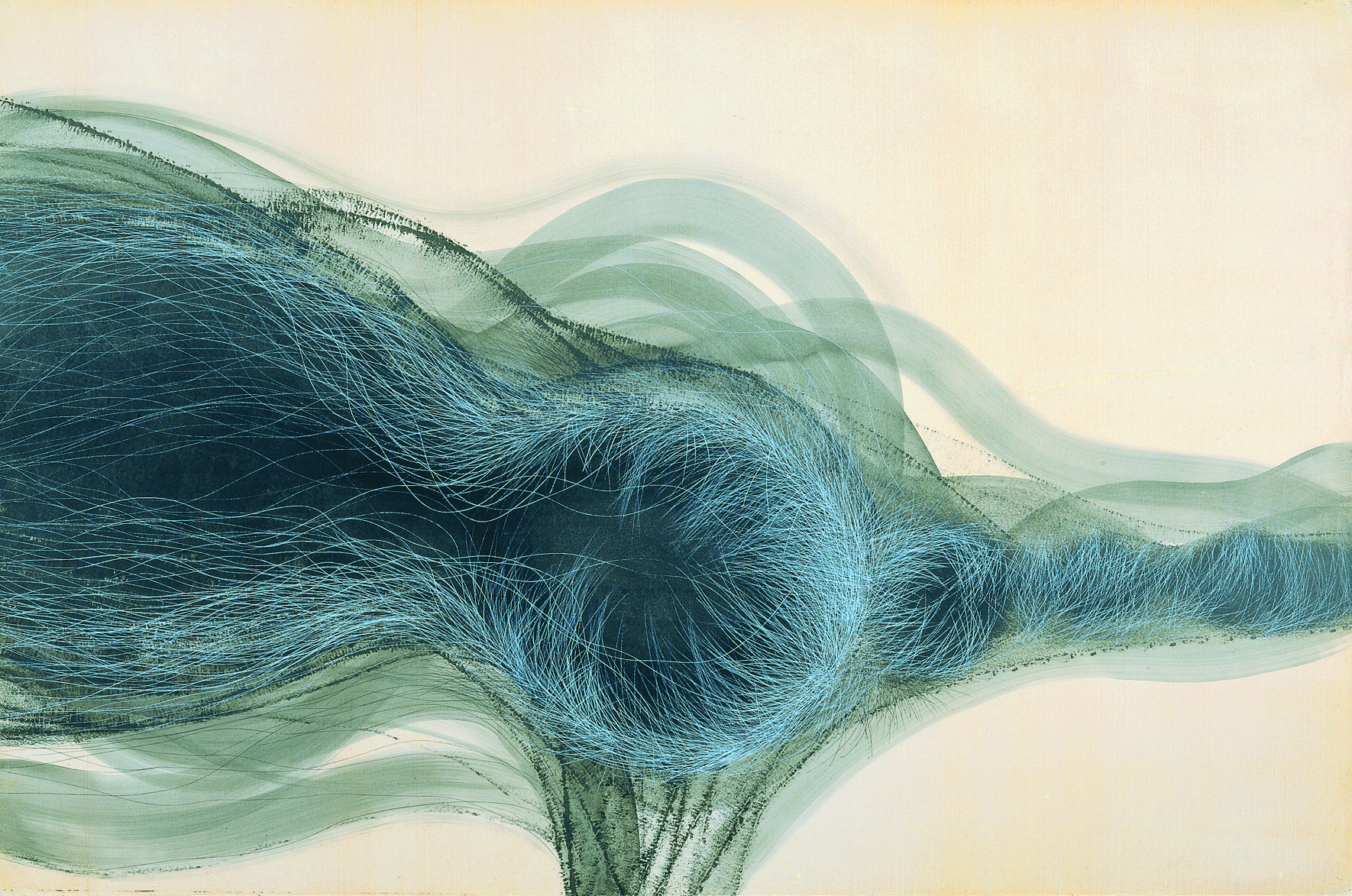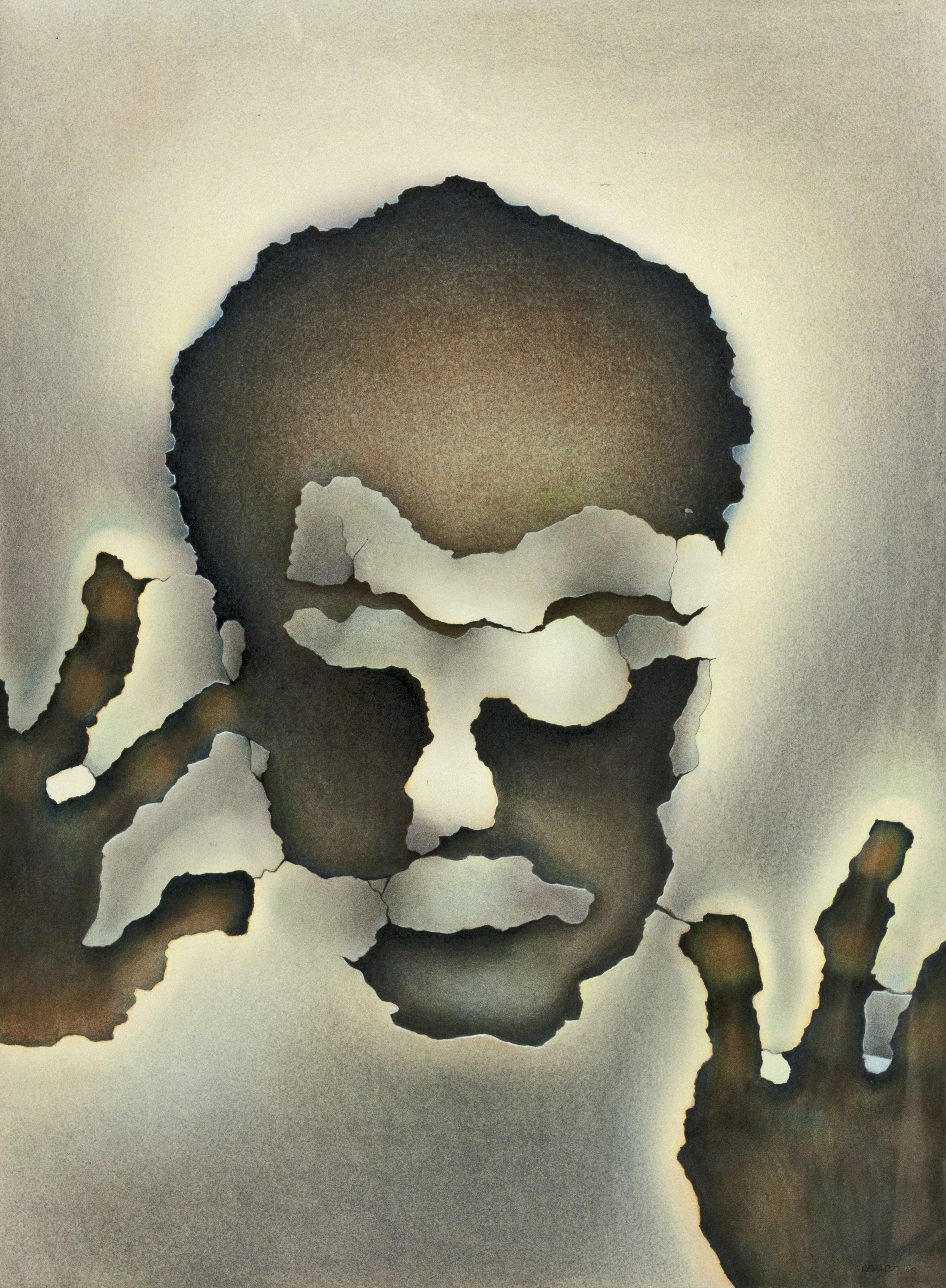STAGE 1: SELF-DISCOVERY–DISCOVERING (Motives that drove them).
STAGE 2: ELABORATING (Contrasting the stored memories).
STAGE 3: INTUING (Analysis of future possibilities).
STAGE 4: CHOOSING (Reasons that prompted them to decide).
STAGE 5: INVENTING (Materializing what has been processed through the proposed exercise). The attached form is unrequired for this.
Resituating Creativity
08/10/2022
Introduction... emerged in the context of the last post-dictatorship in Argentina as a tool to begin healing the civil trauma of years of human rights violations (...) Resituating this method today could prove interesting for restoring the social and affective bonds that have been highly stressed due to the Covid-19 pandemic.

«(...) Faced with the problem of all this and of making, I tried to gather my current resultant into one work, that is, I felt a need to integrate myself. This integralism took me deep, since I embrace the feasible combative coexistence of the elements, as long as they live in a common environment that contains and harmonizes them without detriment to their individual integrity.»
«Creativity is a much-talked-about and little-researched word. Normally, it is used for producing more or less original facts that, later, may or may not result in consumption factors. That, to my understanding, configures a use of the people who generate them, who are then removed when such capacity decreases.
My intention is to improve the individual since I understand that we are all creative, as we are rational beings. The difference lies in the transcendence or not of such creativity.»
The Introduction to Creativity Workshop taught by Emilio Renart (Argentina, 1925-1991) at the Museo de Artes Plásticas "Eduardo Sívori" [Eduardo Sívori Museum of Art] in the City of Buenos Aires, between 1985 and 1988, brought about the implementation of a work method that sought to stimulate self-awareness in its participants by heeding the distinctive power of imagination that resides in all human beings. Far from training professional agents and individual competitiveness, the method reflected on the search for the individual artistic mark while proposing a horizontal dynamic of camaraderie and reflection. It also sought to repair social and emotional bonds among the participants, creating a community of peers and support.
Renart approached the artistic realm from different approaches under two radical notions of his expanded practice: 'integralism' and 'creativity.' From this standing, he understood the production of visual artifacts, research, and writing of what he referred to as ‘creativity,’ as well as the significant work around teaching that he sustained for several years. ‘Integralism’ is the postulate from which he originally approached the artistic practice he performed and sought to condense in the series Integralismo. Bio-Cosmos (1962 - 1967). As he understood it, this functioned as a totalizing principle in the joint use of elements that come from disciplines that traditionally operate separately. Thus, he thought of it as the possible concatenation of interdisciplinary elements, intending to reach the maximum possibilities of the artistic means (drawing, painting, sculpture).
In turn, he proposed the imaginative power contained within each person under the label 'creativity,' as a tool for configuring personal imageries that does not respond to statements of what art "should be" as a derivative of the creative industries. His entire oeuvre can be viewed and analyzed from this utopian prism of expanding the established limits, which he represented in his artistic practice, condensed in his writing works for catalogs, embodied in the book Creatividad [Creativity] (1987), and activated on the public sphere through his practice of teaching workshops in educational institutions, as well as in the structuring of the Introduction to Creativity workshop held at the Sívori Museum.
The Context as a Trigger
Introduction... was held at the Sívori Museum for several years, with attendance from thousands of people of different ages, interests, and backgrounds. It came about through an invitation made by Hugo Monzón, director of the institution between 1985 and 1995, in a specific historical context in Argentina: the Alfonsinist spring. There was a widespread social climate of euphoria, joy, and civil illusions due to the return of democracy with the administration of President Raúl Alfonsín (1983-1989), which put an end to the last civil-military dictatorship (1976–1983)1. The workshop was structured in different stages and took place in a public museum2 under the umbrella of the Government of the City of Buenos Aires, which houses one of the most important collections of Argentine art.
In this general context, the beginning of the workshop was framed within the implementation of public policies aimed at reducing the elements of authoritarianism still at work, to give way to forms of representation of the will of the citizens once again. The intention was to redevelop a participatory society, where the plurality of views and positions rejected dogmatism. Various mass literacy programs were implemented and censorship regulations lifted from several artistic activities. Profound transformations were carried out in art institutions, universities, and the scientific system, encouraging the return of exiled intellectuals to the country. Several civil rights laws were enacted, such as divorce and shared parental authority. On the other hand, an unprecedented event occurred: the judicial trial known as the "Trial of the Juntas," carried out by the civil justice system in 1985 against the members of the civil-military dictatorship due to their grave and massive human rights violations against the people of Argentina.

Within this social-political framework, the workshop took place in a public institution and was open to anyone interested in participating, with the aim of reconfiguring affective bonds. The origins of the method date back to the early 1970s, following the death of Renart's 16-year-old daughter Graciela in a traffic accident. This circumstance gave rise to the "coexistence exercises"—the proto-equation he would later develop over the years. At that time, the method focused on the interest in soothing the pain of the family members within their intimate affective unit. For this purpose, he gathered them over several days around a sheet of paper on which each one expressed what they felt through dots, lines, letters and numbers, and using colored markers. There were three basic premises: 1) to work outwards, from the center to the borders, to avoid being forced to determine who reached the center first (this criterion was competitive and, therefore, a cause of conflict); 2) not to interfere with any line, which meant respecting the effort made by one or the other; 3) when participants got tired, they could ask for a group rotation; this implied giving up their work space—their territory—and to face what others had done, which had to be inexorably respected according to the established rules, even though learning to relinquish was not easy.
These working sessions based on the physical horizontal proximity of the participants' bodies allowed it to function, in the words of Renart, as an "attenuated therapy." Articulating a discourse through scribblings and spoken words emerged as a channel within a process of healing, rekindling affective bonds, complicity, and communion.

Beyond the affective aspect and dimension, Renart began to understand that this practice was indissoluble from the one framed within the artistic realm. In the series Integralismo. Bio-Cosmos (1962-1967) he had sought to connect traditionally opposing parts, such as the wall, the floor, sculpture, painting, and drawing by configuring a personal image and style. By 1973, he began to consciously understand that group integration and parity among the participants through exercises meant enhancing the individual creative dimension, starting with what he considered a common patrimony: the knowledge of graphic elements.
The proposal made by the director of the Sívori Museum allowed Renart to deepen his work method, open it to new participants, and join forces with other people. From the beginning, Introduction... had an overwhelming reception: for the first session, the number of attendees exceeded the capacity. It was necessary to add another day for the workshop and to structure an internal organization with coordinators and an advisor. More than 5,000 people attended the course over the years. The workshop, in general, was conceived and coordinated by Emilio Renart, who summoned the psychiatrist David Ghelman to join the team to provide support to the various coordinators due to the demands imposed by the large number of attending people.
The Introduction to Creativity Model
The workshop was structured in various groups of participants with the presence of coordinators and specialists. The sessions lasted between two to three hours, during which the dynamics established an investigation focused on each person's self-inquiry to project personal concerns, tone down hypercompetition, cultivate affection, and fluidify communication as a mechanism to overcome fears. The proposal stated that "If there was a result, it would be to realize that we can all express ourselves creatively since we are rational beings; that means that we have a capacity for associating ideas that the rest of the living beings lack." Thus, he sought to undo competitiveness and establish an affective dynamic based on structuring a social community through communication, which would facilitate the development of both the individual and the group. The purpose was to rescue the person and their creativity. Hence, the workshop was structured in different "stages" that each participant had to go through. Each of them had a general objective, which, in short, were as follows:
Introduction... conveyed a large number of people at the Sívori's facilities over the years. People with all kinds of interests went through all the stages and several developed artistic activities professionally, such as Liliana Maresca and Claudia Aranovich; others assembled a network of support and communication that allowed them to be free in terms of their individual creativity. The development of the creative singularity of each participant was encouraged in a supportive environment that enabled self-inquiry and the use of multiple and diverse materials for configuring personal images.
Introduction... emerged in the context of the last post-dictatorship in Argentina as a tool to begin healing the civil trauma of years of human rights violations, which left behind a legacy of increased individualism, intensification of the right wing within society, and a growing preference for inequality. Resituating this method today could prove interesting for restoring the social and affective bonds that have been highly stressed due to the Covid-19 pandemic. Keeping in mind the obvious tragic distances between both processes, but understanding that going through an unprecedented and traumatic situation for society, such as Covid-19, entails some social deterioration, it could be useful to look at dynamics carried out in the past to shed some light into the future.
Introduction... was designed on a collective work based on a horizontal camaraderie that inquired into the configuration of individual and personal styles that answered to authentic desires in the constitution of their visual universes. Through a work that did not respond to a single model, he used self-inquiry and self-awareness to search for answers on what art is or what an artist should do, and what materials to use.
Oftentimes, it is enough to go back to the archives to feel the reverberations of the oralities contained in the documents, and to shed light on which diagonals to transit.